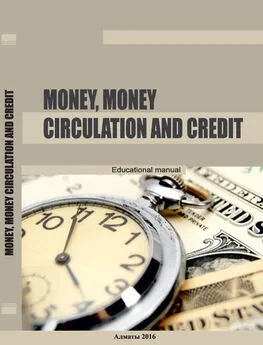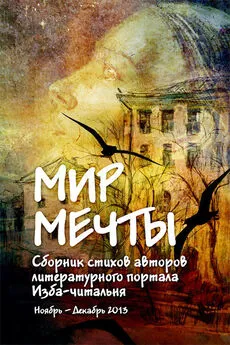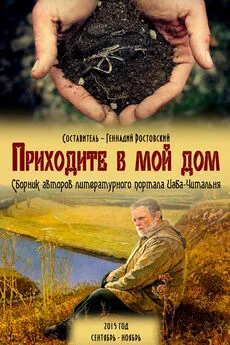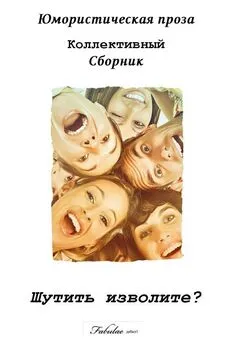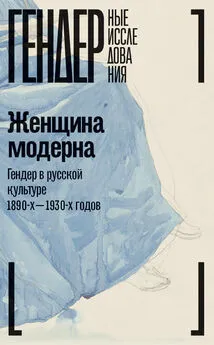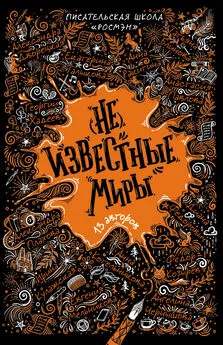Коллектив авторов - Money, money circulation and credit
- Название:Money, money circulation and credit
- Автор:
- Жанр:
- Издательство:Казахский национальный университет имени аль-Фараби Литагент
- Год:неизвестен
- ISBN:978-601-04-1569-0
- Рейтинг:
- Избранное:Добавить в избранное
-
Отзывы:
-
Ваша оценка:
Коллектив авторов - Money, money circulation and credit краткое содержание
This еducational manual is published for students and lecturers of the economic universities.
And is also could be useful for credit and fi nancial system employees.
Any distribution of this work or its part without the author’s agreement or other actions which violate a copyright norms are prohibited and punished by law.
В учебном пособии рассматриваются вопросы теории и практики денег, кредита и банковской системы страны, в частности, сущность денег, денежное обращение, кредит, денежная, кредитная и банковская система государства, становление и развитие банковской системы республики, ее функции и операции, развитие рынка ценных бумаг, фондовая биржа и международные валютно-кредитные отношения.
Учебное пособие предназначено для студентов и преподавателей экономических вузов. Также оно может быть полезным работникам кредитно-финансовой системы. Любое распространение этой работы или ее части без согласия автора или других действий, которые нарушают авторское право, запрещены и караются по закону.
Money, money circulation and credit - читать онлайн бесплатно ознакомительный отрывок
Интервал:
Закладка:
During the direct commodity exchange (G-G – good for good) the purchase and sale happened simultaneously in one place without any gaps. The commodity circulation (G1-M-G2) consists of two independent actions separated in time and place. Money plays the role of representative which allows to overpass the temporal and spatial gaps and to provide continuous process flow.
To money peculiarities as a mean of circulation first of all we can include the real money appearance in circulation and its evanescence in exchange. In this connection the token money – paper and credit – can perform the velocity function. Here the parallel countermotion of money and goods happens when money is tied to the goods movement. Historically this function generated token (paper) money.
The function of means of hoarding and savings. Money being the universal equivalent i.e. providing its owner the receipt of any good becomes a creation of social wealth. People feel an aspiration to save and reserve money. During the metal circulation this money function played the role of spontaneous regulator of the money turnover – spare money went to treasures and money shortage was filling up by them.
In the conditions of widened commodity reproduction the accumulation (saving and storing) of temporarily disposable monetary resources is a necessary condition of the capital turnover. The creation of money reserves flattens the inequalities and peculiarities of economic life. On a nationwide scale the gold reserve stock creation was required. In accordance with a demonetization of gold the amount of gold hoard gives evidence of the State’s richness and provides trust of residents and nonresidents to the national monetary unit.
Money can perform this function because it has «a perfect liquid- ity» of a nominal value.
Of course there is no use to save money in the countries with growing inflation because it devalues too fast. In consequence it looses its force of attraction in spite of high liquidity. If every day we can buy the lesser quantity of goods on dollar, ruble or tenge people wouldn’t like to save the value too long in a monetary form. There are known cases when in the conditions of hyperinflation the workers claim not for the monthly wages but for daily in order to spend their money before the prices will grow on the next day.
In those countries where the hyperinflation exists the national currency could be almost denied as a mean of hoarding and as a standard of value. In such circumstances an interesting situation appears: the national monetary units perform the functions of circulation and standard of prices but as a mean of hoarding the more stable foreign currency is used bought by the monetary assets holders.
The representative function interweaves and interlinks directly with the function of money as a mean of payment – payment of taxes, receipt and reimbursement of credit, payment of salaries, allowances, payment for utility services. Whereby a money circulation is not accompanied by a simultaneous goods transfer.
Initially this function was performed by the gold money and then by paper and credit. Historically the function of a mean of payment generated the credit money – a kind of token money. Money as a mean of payment has a specific scheme of transfer (G-UPI-G) which is not linked with the goods’ countermotion, i.e. money – urgent proof of indebtedness – money.
According to this scheme in the conditions of developed goods production the goods’ owners are linked to each other and a payment link opening will cause a range of payment failures: one tenge of the State debt will result 5-6 tenge of the other nonpayments.
In the conditions of a legal basis imperfection and an inflation growth in the middle of 90 thof the last century the crisis of nonpayments accrued. Thus in Kazakhstan in the beginning of 1995 the nonpayments amounted 368.2 billion tenge, in 1996 – 533.9 billion, in 1998 – 637.9 billion. From 1998 some decrease occurred – 518.9 billion tenge and on 01.12.2002 – 148.2 billion tenge what was the result of the economic situation stabilization.
The usage of money as a mean of payment was described in detail in «The Russian Truth» (the XI thcentury): «Kunas are needed for payment of viras (penalties), debts and rezas (percents), obrok and render (for plough – ral and yard – smoke)». As the industrial society developed a mean of payment increasingly substituted a mean of circulation.
In the modem economic literature these two functions of money are usually united. It is hard to overshoot the significance of money as a mean of circulation because it allows avoiding a barter form of trade. An exchange of barter on a money trade separates the act of sales from the act of purchase.
If money exists the seller should find somebody who’d like to buy his good and then after money receipt he will buy everything that he’d like. An exchange of barter trade mechanism on a mechanism which uses money as a mean of circulation leads to a circulation cost improvement.
A money exchange demands rather less forces and time then barter. Decreasing the circulation costs money stimulates the development of specialization and trade. Money which performs well the function of a mean of circulation is gladly admitted by everyone. Money gives its owner some purchasing power which is very important advantage.
Money allows making a flexible chose of types and quantity of the purchased goods and either of places and time of shopping and the dealing partners. If some mean of circulation is used for the quite long time period thus its usage becomes stable and depends on the readiness and desire of population to use it.
These are some examples of money unacceptability. In 1970 the U.S. Treasury for two years issued the two dollar banknotes which were suspended from 1966. The Americans didn’t admit these banknotes. One of the reasons was that a two dollar banknote could be easily misrecognized as a one dollar. People obviously preferred the banknotes with a bigger nominal difference, for example between 1 and 5 dollars, but not 1 and 2. Besides many people found the two dollar banknotes unlucky.
In 1979 the U.S. Treasury tried to decrease the emission costs again by a one dollar coin issuing with an image of Susan B. Anthony. A great saving was planed because the coin’s service life is equal to 15 years in average, but the paper notes serve not more than 18 months. Either the U.S. Treasury supposed that the usage of one big coin is much more convenient then of some little. And again this effort was neglected by the population: first of all because this coin was similar to a quarter of a dollar coin by size and they could be easily misrecog- nised; secondly paper money is more preferable than coins.
The function of world money. It is a function of money used on the world market for international relations support. The world money performs three functions:
Of an international mean of purchase – money is used for the goods purchase and sale on the world money for cash;
Of an international mean of payment – money covers the international debts;
Of an international standby fund – money performs the role of an international mean of payment stock. The state gold reserve stock performs this function.
Historically the gold played role of the world money as an external account mean of control. The Paris agreement of 1867 declared only this metal. And such situation kept for quite a long time.
After the World War I stsome other national currencies of different countries joined the rank of world money – the US dollar, the British pound, the French franc. In 1922 it was formalized in legislation by the international agreement in Genoa when the British pound and the US dollar were announced as the equivalents of gold and introduced into the international circulation.
After the World War II ndthe leaders of the biggest states tried to avoid the mistakes which lead to the World crisis of 30 th. On July 1944 in Bretton Woods they created the system of stable exchange rates which was called a «Bretton Woods system».
The member governments of the International Monetary Fund which was created on the same international conference along with the International Bank for Reconstruction and Development fixed their currencies rates in dollars and gold, and the dollar from its side was linked to gold (35 dollars for 1 ounce of gold).
Thanks to the fact when for long years USA purchased and sold gold, i.e. created or destroyed dollars the price of gold became stable on the level of 35 dollars and almost eliminate the inflation. Dollar’s credibility and American economic monetary policy stability were incredible moreover the foreign exchange banks at any time could change their dollars on gold.
During the «Bretton Woods system» action the World economy and World trade quicksteped to new peaks. Simultaneously the inflation index kept steady state (about 3 %). Only slight deflections were observed in most of the countries. However this system was fraught with some danger. Because the industrial productivity in USA in 1969-1970 was lower than European and Japan, the American goods’ competiveness on the World market fell. The dollar exchange rate revaluation was unavoidable. To save the system of stable foreign exchange rates was impossible. The sharp floating because of instability in dollar led to the «flight of the dollar» and its following fall in exchange. The dollar stayed a leading currency. And on April, 1972 the «Common Market» Nations came to a decision to establish between themselves more narrow range limits of their currencies and for this purpose created a so called «monetary snake».
In order to decide the problem of an international liquidity the International Monetary Fund constituted the special drawing rights (SDR). Initially in 1970 for one SDR a fixed gold content was hardly as for US dollar – 0.888671 g of pure gold. On Decenber, 1971 one more attempt was tried in order to stabilize the foreign exchange rates. The US dollar was devalued in relation to gold: from 35 U.S. dollar an ounce to 38 U.S. dollar an ounce.
On February, 1973 the US dollar was devalued for the second time and an exchange market should be closed for several weeks. In this regard most of the countries came to the system of floating rates. However after two devaluations of the US dollar and the «floating» foreign exchange rates introduction from July 1 st1974 the SDR unit value began to be determined on the basis of «currency basket:, i.e. the average weighted foreign exchange rate of the 16 leading capitalist countries the share of external trade of which constituted not less than 1 % of the world trade quantum.
From January 1 st, 1981 the quantity of currencies in the «currency basket» was decreased to five after what its content is subject to review every five years. However the countries of EES were not satisfied with the SDR system functioning and its close link with the US dollar.
From March 13 th, 1979 the European Monetary System began to function which consisted of 8 countries of the «Common Market» (Germany, France, Benelux, Italy, Ireland, Denmark). For the European Monetary System member countries a European Currency Unit ECU was introduced.
ECU is a paperless monetary unit in a type of account record in the member countries’ central banks. The value of ECU is determined on the basis of the average weighted exchange rate of these 12 governments. In order to determine a share ofthis or those currency in ECU the GNP (gross national products) of the member countries were matched.
A new stage of the West European integration development was the program of the currency and economic union creation which was established by Jacques Delors’s committee in April, 1989. Delors’s plan stipulated the creation of the Common Market, the EU competition motivation, the coordination of economy, budget and tax policies in order to control the inflation, to stabilize the prices and economy growth, the general government deficit minimisation and the cover methods improvement. On the basis of Delors’s plan to December, 1991 the Maastricht Treaty about the European Union was worked out which stipulated a stagewise formation of a currency economic union.
Читать дальшеИнтервал:
Закладка:
